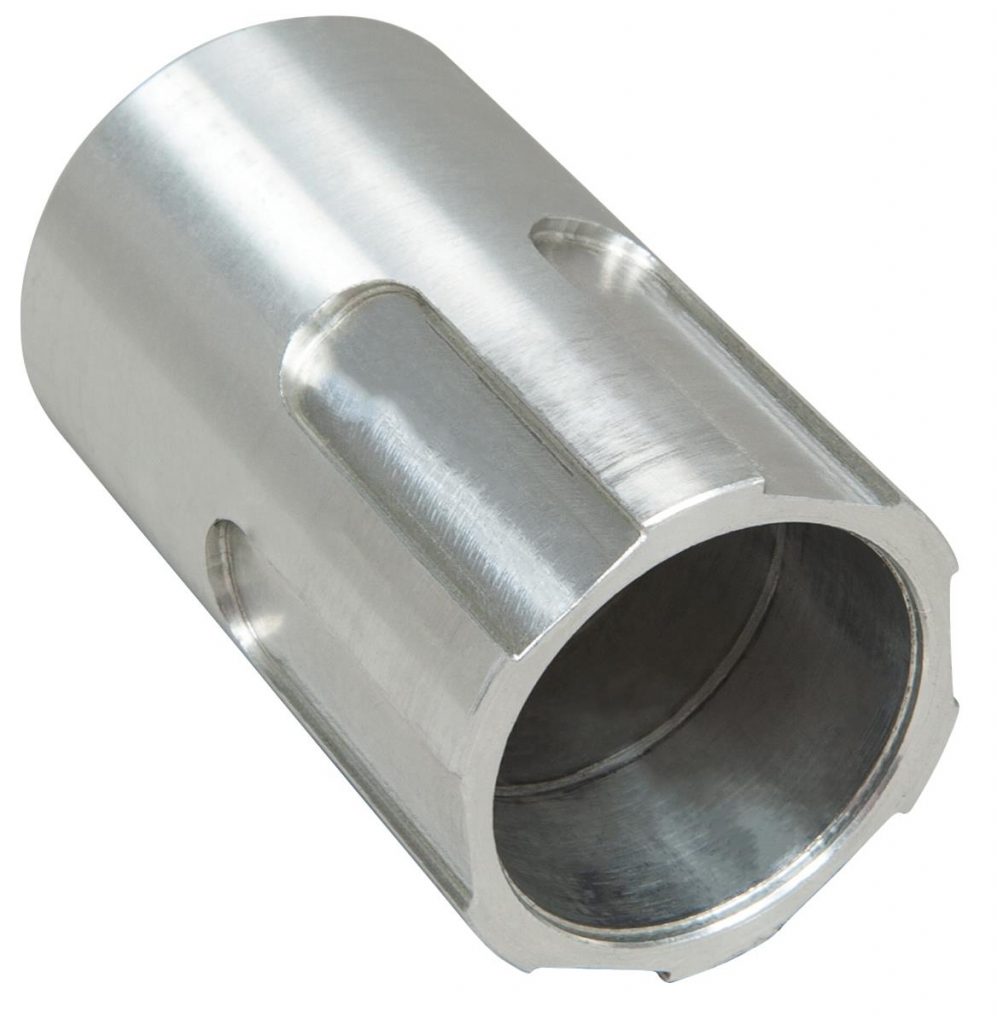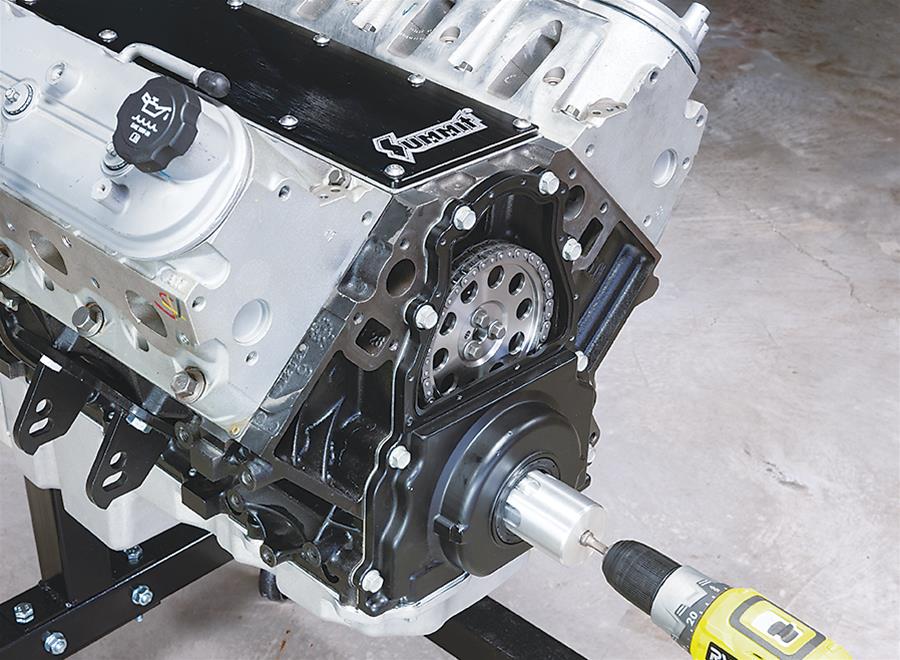
The need to prime a fresh engine before initial start-up isn’t a big secret.
It’s also a good idea to prime the oil pump before it is installed. Experts concur.
The folks from Melling offer this insight:
“Although oil pumps are made with close tolerances, often they aren’t self-priming. Unprimed, an oil pump could run for several seconds before picking up oil. Or worse, it might not pick up oil at all. This could lead to early wear of the oil pump and the engine bearings.”
Priming (and testing) the pump prior to installation is easy.
You can simply dip the pump with a pickup attached in a container of clean oil and turn the driveshaft by hand until oil is released from the pump. Basically, you now know it works. Some folks adapt an oil PSI gauge to the pump in order to check pressure, but it’s certainly not essential.
Next, drain the oil and install the pump on the engine.
Once the engine is assembled, you should prime the oiling system. That’s accomplished with a pump priming tool. Yes, it’s easy enough to build your own by using an old distributor shaft and body, but the tools are available right here at Summit Racing and for the most part, they’re very affordable.
Using a typical Chevy as an example, the pump primer is inserted into the distributor hole and, in turn, engages the oil pump drive shaft. At this point, the top of the shaft is chucked into a 3/8-inch, or preferably, a ½-inch drill and spun in the direction of distributor rotation until the engine develops full pressure for approximately 30 seconds. The crank is rotated approximately a half-turn and the process is repeated. Those are the basics.
There are a couple of different primer styles out there.
The simple ones for Chevys such as the Moroso 62200 tool shown in the accompanying photos will likely only prime the pump. You won’t be able to pressurize the top end of the engine. Tools such as the Melling PT13 or the Stef’s (B&B Performance) 65100 incorporate an aluminum bushing that seals the oil gallery. That in turn directs oil to the cam bearings, lifters, pushrods and finally the rocker arms.
With these more refined tools, you can actually witness the oil as it comes out of the rocker arm(s).
A note here regarding drill motor size: A wimpy 3/8-inch drive setup might be suitable for an application that uses super light oil, but if you’re into (for example), 20W-40 lube, you’ll likely need something more substantial.
While you’re at it, it’s a good idea to very slowly rotate the engine a full turn (by hand) while priming the oiling system. Although this process might take an extra set of hands (buddy, wife, neighbor, kid), it just adds insurance that everything is properly lubricated.
The bottom line here is, you never want to allow the crank main journals, rod journals, or cam journals to ride directly on dry bearing surfaces.
A film of lubricant is needed. Otherwise, damage can occur in a nanosecond.
In the end, priming tools are inexpensive and readily available.
For a closer look at the three different conventional Chevy jobs mentioned in the text, check out the accompanying photos.





…
Distributor-less Priming
Obviously, late model engines such as the Chevy LS are distributor-less. That means you can’t prime them with a drill hooked up to a priming tool.
For these engines (those fitted with a removable oil pump drive gear), Summit Racing has come up with a special oil primer socket. It simply slips over the crank. You hook up a drill and manually spin the pump, which in turn, lubes the engine. It’s available under part number SUM-900330.



[…] The need to prime a fresh engine before initial start-up isn’t a big secret. It’s also a good idea to prime the oil pump before it is installed. Experts concur. […] Read full article at http://www.onallcylinders.com […]
What about on semi trucks mbe 4000 engine
20W40 in a fresh start up engine??
What about the Ford and Mopar engines. Ford big and small block engines and the Mopar RB/BB and SB are similar to a Shevy when it come to priming the oil pump. But what about the Ford 4.6, 5.0, and 5.8 Coyote engines along with the late model Mopar Hemi’s?
That Summit LS primer tool does NOT work on factory oil pump drive gear, only with separate AFTERMARKET pump dives.
*drives
[…] No doubt about it, priming a freshly-built engine is absolutely, positively critical to ward off premature component wear and part failure. (In fact, we’ve already dedicated an entire article to the oil pump priming process.) […]
[…] by OnAllCylinders Staff on April 13, 2021 at 8:40 am Priming a new engine prior to first start-up is really, really, really important (really). This video from Jeff Smith […]
What about the assembly lube put on cam journals, lifters, rocker arms, etc? Won’t priming just rinse all that stuff off?